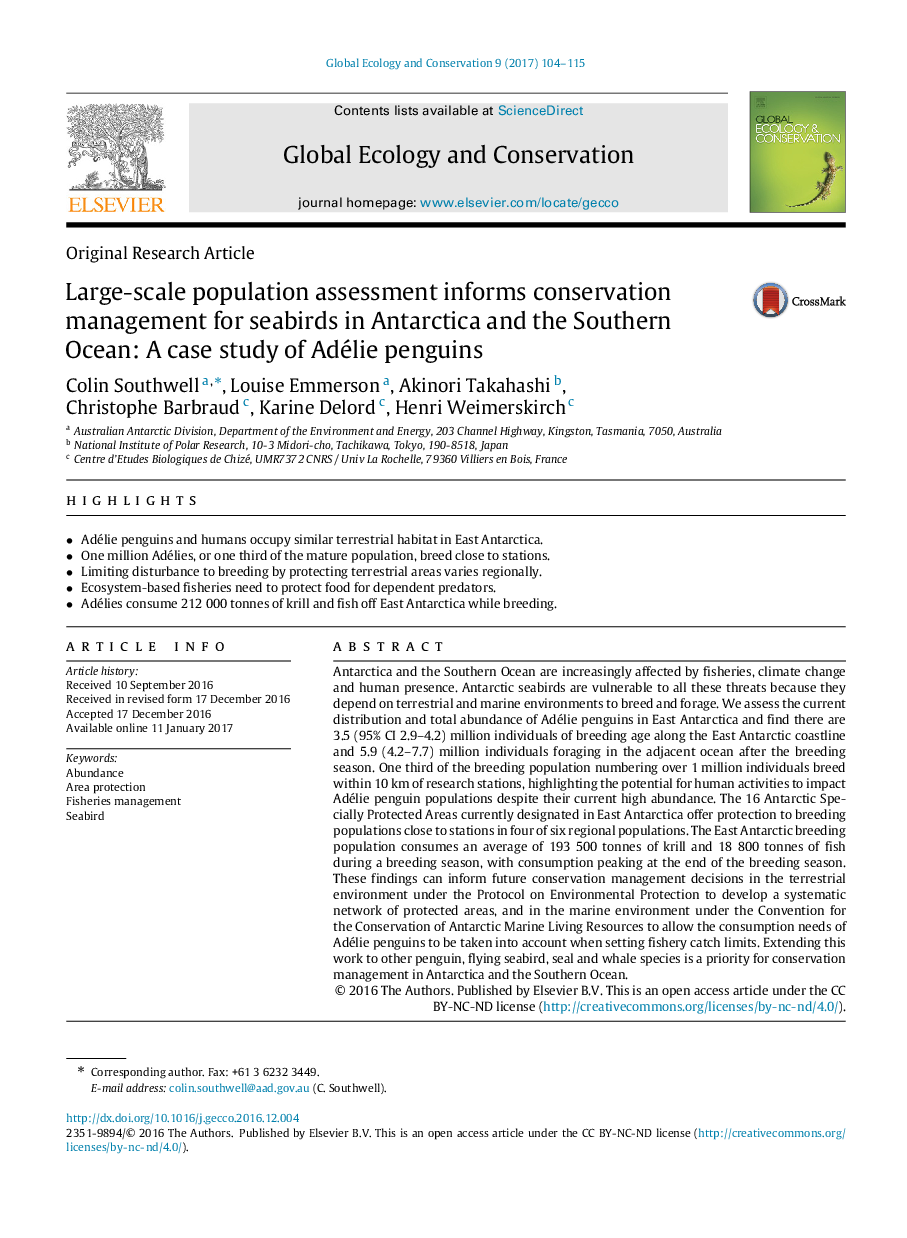| کد مقاله | کد نشریه | سال انتشار | مقاله انگلیسی | نسخه تمام متن |
|---|---|---|---|---|
| 5742433 | 1617658 | 2017 | 12 صفحه PDF | دانلود رایگان |

- Adélie penguins and humans occupy similar terrestrial habitat in East Antarctica.
- One million Adélies, or one third of the mature population, breed close to stations.
- Limiting disturbance to breeding by protecting terrestrial areas varies regionally.
- Ecosystem-based fisheries need to protect food for dependent predators.
- Adélies consume 212 000 tonnes of krill and fish off East Antarctica while breeding.
Antarctica and the Southern Ocean are increasingly affected by fisheries, climate change and human presence. Antarctic seabirds are vulnerable to all these threats because they depend on terrestrial and marine environments to breed and forage. We assess the current distribution and total abundance of Adélie penguins in East Antarctica and find there are 3.5 (95% CI 2.9-4.2) million individuals of breeding age along the East Antarctic coastline and 5.9 (4.2-7.7) million individuals foraging in the adjacent ocean after the breeding season. One third of the breeding population numbering over 1 million individuals breed within 10 km of research stations, highlighting the potential for human activities to impact Adélie penguin populations despite their current high abundance. The 16 Antarctic Specially Protected Areas currently designated in East Antarctica offer protection to breeding populations close to stations in four of six regional populations. The East Antarctic breeding population consumes an average of 193 500 tonnes of krill and 18 800 tonnes of fish during a breeding season, with consumption peaking at the end of the breeding season. These findings can inform future conservation management decisions in the terrestrial environment under the Protocol on Environmental Protection to develop a systematic network of protected areas, and in the marine environment under the Convention for the Conservation of Antarctic Marine Living Resources to allow the consumption needs of Adélie penguins to be taken into account when setting fishery catch limits. Extending this work to other penguin, flying seabird, seal and whale species is a priority for conservation management in Antarctica and the Southern Ocean.
Journal: Global Ecology and Conservation - Volume 9, January 2017, Pages 104-115